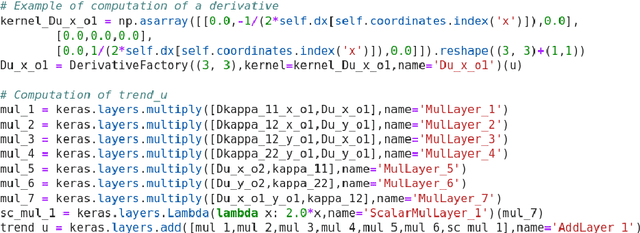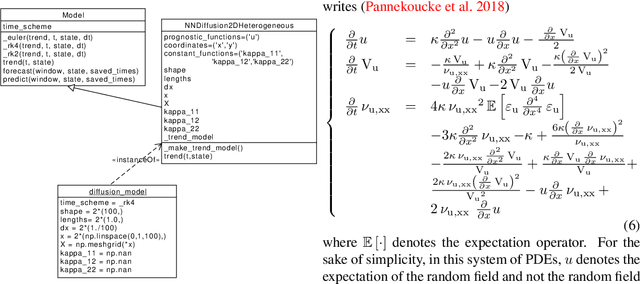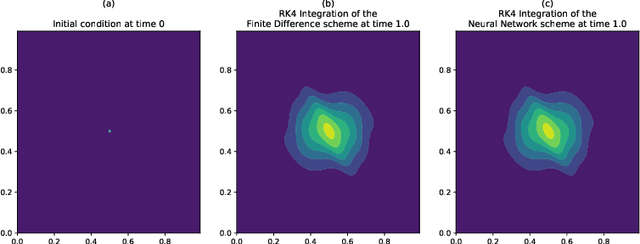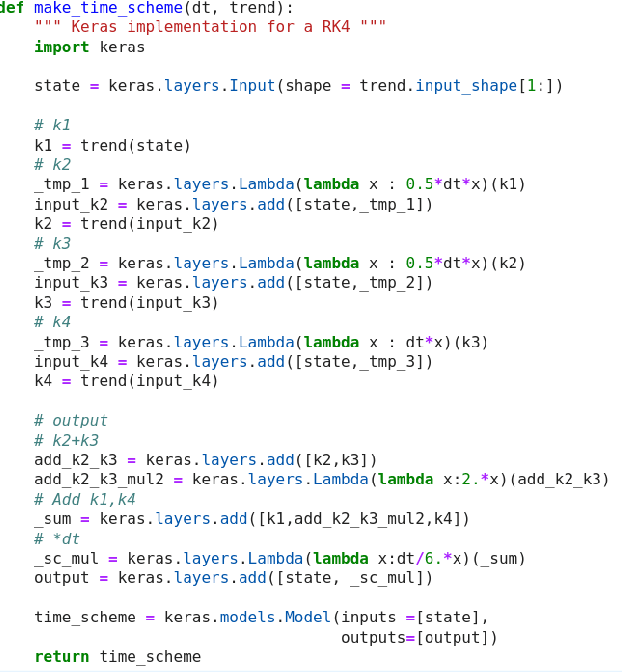Olivier Pannekoucke
Learning Variational Data Assimilation Models and Solvers
Jul 25, 2020



Abstract:This paper addresses variational data assimilation from a learning point of view. Data assimilation aims to reconstruct the time evolution of some state given a series of observations, possibly noisy and irregularly-sampled. Using automatic differentiation tools embedded in deep learning frameworks, we introduce end-to-end neural network architectures for data assimilation. It comprises two key components: a variational model and a gradient-based solver both implemented as neural networks. A key feature of the proposed end-to-end learning architecture is that we may train the NN models using both supervised and unsupervised strategies. Our numerical experiments on Lorenz-63 and Lorenz-96 systems report significant gain w.r.t. a classic gradient-based minimization of the variational cost both in terms of reconstruction performance and optimization complexity. Intriguingly, we also show that the variational models issued from the true Lorenz-63 and Lorenz-96 ODE representations may not lead to the best reconstruction performance. We believe these results may open new research avenues for the specification of assimilation models in geoscience.
PDE-NetGen 1.0: from symbolic PDE representations of physical processes to trainable neural network representations
Feb 03, 2020



Abstract:Bridging physics and deep learning is a topical challenge. While deep learning frameworks open avenues in physical science, the design of physically-consistent deep neural network architectures is an open issue. In the spirit of physics-informed NNs, PDE-NetGen package provides new means to automatically translate physical equations, given as PDEs, into neural network architectures. PDE-NetGen combines symbolic calculus and a neural network generator. The later exploits NN-based implementations of PDE solvers using Keras. With some knowledge of a problem, PDE-NetGen is a plug-and-play tool to generate physics-informed NN architectures. They provide computationally-efficient yet compact representations to address a variety of issues, including among others adjoint derivation, model calibration, forecasting, data assimilation as well as uncertainty quantification. As an illustration, the workflow is first presented for the 2D diffusion equation, then applied to the data-driven and physics-informed identification of uncertainty dynamics for the Burgers equation.
 Add to Chrome
Add to Chrome Add to Firefox
Add to Firefox Add to Edge
Add to Edge